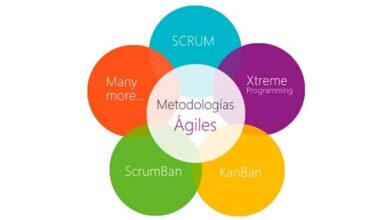Supply chain models its types Importance and Benefits
Supply Chain
In simple words, a supply chain is a network of people, companies, information and resources that facilitates the production and distribution of a product or service to the end user. It could be as simple as acquiring raw material directly from a producer and selling it, or as complicated as acquiring, refining, processing, adding value, packaging, and more. In thjis article we will provide you the Supply chain models.
On the other hand, we have supply chain management, which is the process through which coordination and collaboration occurs between suppliers, distributors , service providers and clients of a company. Some of the important benefits of a supply chain are:
In 1982, Keith Oliver first coined the term “Supply Chain Management” and used it in a public interview conducted by the Financial Times. Subsequently, several domain experts around the world revamped the CS by developing embedded systems, thereby expanding specialized supply chain partnerships through the original equipment manufacturer (OEM). In general, because of these systems today, we have quite a few supply chain models that fit the business needs of the company.
Types of supply chain models
There are 4 types of supply chain most used:
- Flexible model : the focus is on fast delivery to the end customer. Used in markets with high demand consumers and low price sensitivity. Example: electronic commerce of consumer goods.
- Agile Model – The goal is to respond quickly to unpredictable demands. It is used in markets where there is little customer loyalty and that require urgent deliveries, but do not accept very high prices. Example: supplier of commercialized industrial inputs (fertilizers, lubricants, etc.).
- Efficiency Model : focus on economies of scale and low cost. Used in competitive but not fierce B2B markets where price matters. Example: suppliers of office supplies.
- Continuous Model : aims to develop customer loyalty. It is used in markets where the demands are predictable. Example: suppliers of food for restaurants or drinks for bars.
Therefore, you must clearly understand what the market is before making your supply chain.
Importance
The supply chain is critical to the success of a business . Most companies fail due to lack of funding. A large part of finance, sometimes as large as 90% of the cost base, can be attributed to the supply chain, making it the most important cost component. Therefore, the financial health of a company depends on its supply chain.
Strategic management of supply chains and having a design process for supply chains are important aspects to take care of if the business is to be successful. It is important for a company to understand the supply chain in depth for strategic business management, as it is the main cost component of a company.
If the supply chain is well understood and managed, the company’s purchasing and production requirements are effectively met .
Benefits that it brings to any company
The supply chain can be viewed as the roadmap that defines all stages of business operations, from acquiring material from a producer to delivery to the intended consumer. The supply chain, directly or indirectly, meets the needs of its customers.
It also lays the groundwork for material sourcing, which relates to sourcing products from suppliers after examining the material’s reliability, affordability, and quality. After sourcing , the supply chain paves the way for regular sourcing of raw material.
Most importantly, it helps deliver the product according to customer requirements and contributes to customer satisfaction , which makes it a critical element for the growth of a business.
With these tasks, the supply chain or supply chain service contributes to the growth, maturation and expansion of a company, and can rightly be called the life force of any organization. Today’s global supply chains are increasingly complex, so a data-driven approach to supply chain management is a must.
What is the relationship between logistics and the supply chain?
These two concepts (logistics and supply chain) are often confused. There are reasons for this identification with each other, since they are sets of activities that are connected and depend on each other. However, we will explain their differences.
The supply chain is responsible for the methods and operating systems that are directly or indirectly linked to the product. As an example, the activities of purchases, deposits, inventories, etc. are mentioned, which involve from production to the evaluation of the level of customer satisfaction .
Logistics, on the other hand, is one of the steps that make up the supply chain . It cares about the movement of the product from the company to the client, always prioritizing delivery times.
In fact, logistics has been around since ancient times, but as we know it today, it originated in the time of Napoleon Bonaparte. During the Napoleonic wars, it was necessary to move military goods and supplies in large quantities. Evolving over the years, logistics began to take care of the dynamics of the products from the company to the final consumer.
How to carry out good supply chain management?
There is an initial stage, in which we seek to attract and retain customers, which is only possible through the collection of valuable information in the responsible sector of the Supply Chain.
These information gathering activities need to be coordinated. Then there is another stage, in which, with the help of suppliers, products will be devised for the production / sale and acquisition of essential raw materials. The most advanced stage of production will arrive, followed by distribution, transportation and, finally, delivery to the final consumer.
It is essential to have knowledge of the entire chain so that its needs are identified and improvements in production processes are implemented. See some tips for optimizing the supply chain in logistics :
- Locate the best suppliers of raw materials
- Manufacture the product
- Predict and plan the balance between supply and demand
- Storing the product
- Deliver
- receive feedback through customer service channels and improve processes
It is significant that there is participation and good communication between consumers and suppliers to exchange information on the best purposes and the needs for changes to improve production processes.
1.- Suppliers
An extremely important aspect for the supply chain is the choice of raw material. In this sense, it is necessary to maintain a good relationship with your suppliers and always seek the best cost-benefit ratio.
Keep them updated on any changes in the production process so that the deadlines and quantities of raw materials are always in line with the current need of the company. This avoids delays in delivery and excess (or lack of) merchandise in stock.
2.- The action
Key in the supply chain, stock deserves special attention. The location where the goods will be stored and the length of stay must be taken into account during the CS. Therefore, efficient inventory control is essential to reduce costs and meet demands quickly.
3.- Maintenance
Supply chain management must also consider the maintenance of machines and physical space. In order to promote continuous improvement of processes, periodic reviews must be carried out .
4.- Transportation
Product transportation is critical to the success of your supply chain. If the delivery occurs after the deadline or if there are deviations in the route, the customer may be dissatisfied. This compromises the results of your company. Therefore, the transport must be carried out by a team of total confidence. Thus, the deadlines will be respected and the rest of the stages of the chain will not be hindered.
5.- External factors
Supply chain management must also be aware of a number of external factors that can affect delivery to the end consumer. Any unforeseen event related to economic, social, political, legal or environmental factors must be taken into account during the SC.
6.- Standardization
Standardizing your supply chain processes can make a big difference to your bottom line . By opting for standardization, you can:
- Reduce costs
- Increase productivity
- Minimize waste
- Adopt more effective practices
- Exercise greater control over processes
- Ensure end-to-end chain efficiency
7.- Communication
A supply chain must work perfectly. And it is not possible for this to happen if there is no efficient communication between employees and the sectors involved in the chain. Therefore, it tries to optimize communication processes so that they occur in an agile, clear, direct and efficient way.
8 – Automation
How about using technology to your advantage? By automating processes, you can also reduce costs and increase the productivity of your teams. This is because instead of dedicating labor to repetitive tasks, you automate those tasks and reallocate the workforce to activities that add more value to your product. Additionally, automation helps prevent human error and rework.




